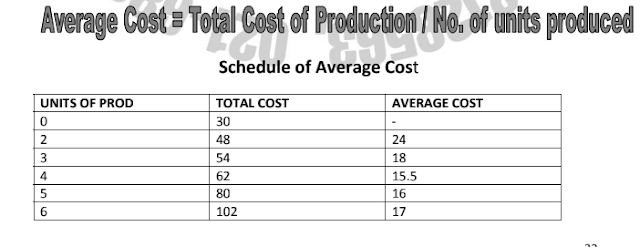Average Cost Vs Marginal Cost and Opportunity Cost
Average Cost Vs Marginal Cost and Opportunity Cost
Average Cost
In economics, average cost is equal to total cost divided by the number of goods produced. It is also equal to the sum of average variable cost plus average fixed cost.
According to above schedule, average cost is constantly falling up to the 4th unit because fixed cost remains unchanged and the variable cost increases slowly but after the 4th unit the total cost is increasing first. This is the reason that average cost is also increases. In short, average cost falls in the beginning but after reaching a point, it increase. This schedule could also be converted into diagram as well.
Did you check the most important questions in economics
Marginal Cost
OPPORTUNITY COST
Cost associated with opportunities that are foregone when a firm’s resources are not put to their highest-value use.

